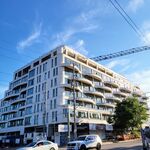k10ery
Senior Member
Toronto has never cut it's business tax rate ...
A while back the province changed the rates at which cities are aloud to increase commercial rates; essentially 3:1. i.e. every 3% increase to the residential rate can only increase commercial rates by 1%.
Yes, but Toronto has been dropping its tax ratios. And the rise in residential values means that the residential rate is dropping, so even with a fixed tax ratio the business rates are dropping (as a percentage of property value).
Toronto's industrial tax rate (including education tax) was 9.9% in 2000. By 2008 it was down to 4.3%. Revenues have not dropped quite that fast, but they have dropped.
What bothers me is, when a company decides to leave the core, as the gross rental rates are more expensive (this should be the case regardless of the tax differential) never is the outer 416 considered, it's always the 905. The reason being for everything we discussed above.
Honestly it doesn't make sense to have the same commercial tax rate applied throughout the city. Or if it does, the commercial rate must be more comparable with the 905.
Interesting, would Toronto be permitted to set up a special tax district - say west of Kipling and north of Finch, and charge lower commercial/industrial tax rates there? Then they could cut rates to compete with Peel and York, but keep the revenues coming in from the CBD.




